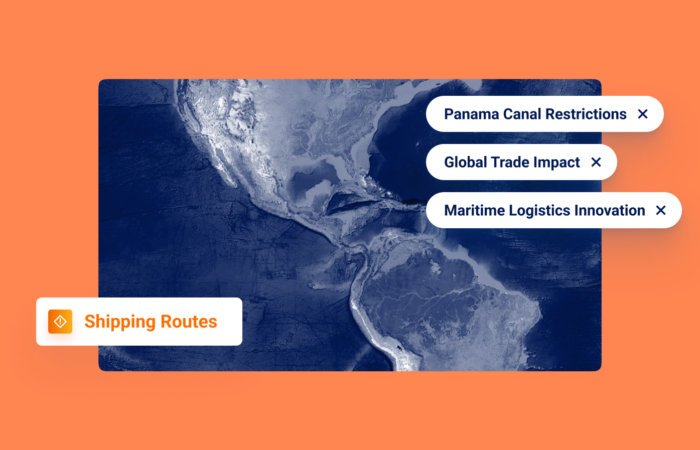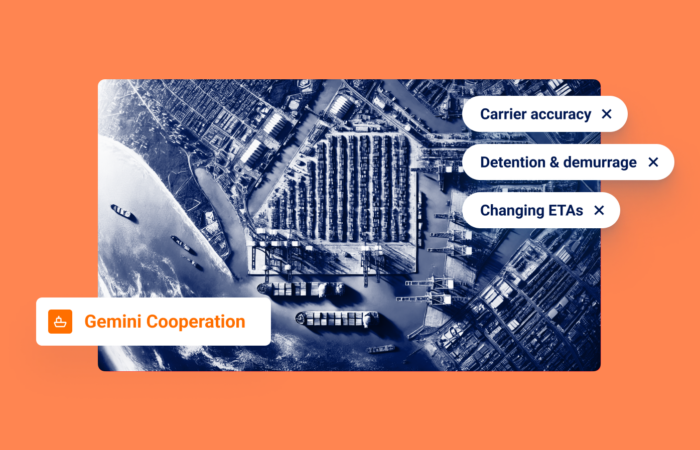Clearing the Fog: Overcoming Ocean Freight Challenges with Maritime AI™

What’s inside?
Ocean freight shipping, the backbone of international trade, is not without difficulties. This crucial process is fraught with challenges – from unpredictable weather to port congestion – that can disrupt supply chains and trigger uncertainty. This blog post delves into these challenges, highlighting how Maritime AI™ can provide real-time insights and exception management, bolstering supply chain resilience. We’ll also discuss the importance of actionable visibility into cargo movement and provide a glimpse into how technologies like Ocean Freight Visibility can reshape the shipping industry.
What are the Challenges of Ocean Freight?
Ocean freight faces a range of challenges, such as the aforementioned unpredictable weather conditions and port congestion. The long transit times associated with sea freight can introduce uncertainties that impact inventory management and overall supply chain efficiency. The lack of real-time information about vessel movements can exacerbate these challenges, making it difficult for businesses to respond effectively to disruptions.
Handling shipments at scale is another major challenge. It can be difficult to know where to focus your energy and resources. With a Maritime AI™ platform, this can be simplified. Create customized alerts, empowering you to concentrate on your core business and efficiently handle vast operations. You can manage exceptions at any stage of the shipping cycle, from planning to the arrival at the port of discharge, including automatic alerts for:
- Planning – such as non-feasible paths and short transshipment port (TSP) buffers based on historical data covering all vessels involved in the shipment route
- Route & Schedule – with full container voyage route, TSP and other port changes during the shipment, including vessel schedule deviations
- Detention & Demurrage (D&D) – monitoring for D&D times, including containers not collected or returned from port
- Compliance – including transfers through Russia due to ad hoc TSPs and rollovers, and identification of sanctioned vessels and companies
Why is Possessing Actionable Visibility Over Cargo Movement Necessary?
Having actionable visibility over cargo movement is necessary for several reasons. It ensures that you possess real-time information about the whereabouts and conditions of your shipments. Clarity enables proactive decision-making, allowing you to respond promptly to unexpected events, adjust supply chain plans, and mitigate potential disruptions. It also enhances customer satisfaction by providing accurate delivery estimates and reducing uncertainties.
Can You Track Sea Freight?
Yes, tracking sea freight has become increasingly intuitive with advancements in technology.
Windward’s container tracking guide explains how it works: “Advanced Maritime AI™ technology uses deep learning and machine learning models that generate real-time ETA predictions for the entire global fleet of container vessels. It continuously calculates congestion levels at all container ports, providing the most accurate container ETAs.”
Windward’s glossary goes on to further highlight: “These AI algorithms collect and analyze vast amounts of data from various sources. These include satellite imagery, weather patterns, and port data, to provide real-time visibility into container movements.”

Is Cost Savings a Major Benefit?
There are many extra costs that can be avoided if you have an accurate container tracking system in place. For example, demurrage and detention charges can significantly impact the costs of international shipping operations. They are fees associated with the use of shipping containers beyond the agreed-upon free time allowed by carriers and terminals. These charges are incurred when the containers are held at the port, terminal, or other designated locations for longer than the allotted time.
Implementing container tracking for supply chain management brings numerous benefits to businesses. With real-time shipment visibility provided by Maritime AI™, organizations gain actionable insights into container movements, allowing them to proactively manage exceptions, anticipate delays, and make informed decisions. This level of visibility builds a resilient and agile supply chain. Embracing container tracking technology and leveraging Maritime AI™ empowers businesses to streamline operations, optimize efficiency, and create a competitive edge in the dynamic world of supply chain management.
What is the Outlook for the Shipping Industry in 2023?
The shipping industry is expected to continue navigating through various challenges and opportunities for the remainder of 2023. With technologies like Windward’s Ocean Freight Visibility gaining traction, businesses can expect more efficient and resilient supply chains, better risk management, and enhanced customer experiences.
By harnessing the power of real-time tracking and insightful data analysis, companies can navigate the seas of uncertainty with greater confidence and agility, paving the way for a more robust and sustainable shipping industry in the years to come.












